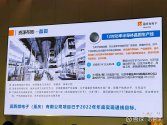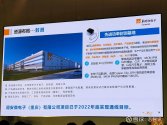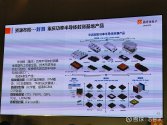You are using an out of date browser. It may not display this or other websites correctly.
You should upgrade or use an alternative browser.
You should upgrade or use an alternative browser.
Chinese semiconductor industry
- Thread starter Hendrik_2000
- Start date
- Status
- Not open for further replies.
It depends on how rational the US is, and how much the US can whip the rest of the world into a China-hating norm. I.e.: how much they can shift the Overton window.
Keep in mind, I'm not saying that I think the US will necessarily be successful in the measures I described, but I think we should expect the US to try all of them on and push for it.
An irrational US will automatically lose much of the world and its allies
And if anything, views of China realistically can't get any worse
If anything, they'll only get better from this point on in the coming years
As I said, the most extreme of these measures (like assassinations) conducted on a large scale would likely be in the outright lead up to military conflict.
However I can certainly see the US trying to push as hard as possible for all of these options among its allies/tributary states,
If the US is conducting assassinations on a large scale and goading China into a war, US allies and neutral countries will pitch an absolute fit.
As per Patchwork's previous comments, a US-China war would result in an estimated GDP decline of 25-35% after a year, which applies to both China and the US economy. That's comparable with the Great Depression.
Large scale assassinations will be seen as the US deliberately pushing for a war, so the US will only lose allies and neutral countries to China. If China only responds proportionately to US provocations, then China will be seen as the victim and garner sympathy.
And if the US doesn't have access to local bases in the Western Pacific, the US will lose the war it wants to start with China, and every country in the world will disassociate themselves from a clearly deranged USA.
I think everyone who is responding with "but this will result in blowback/won't succeed" is missing the point.
My overall argument is fairly simple:
1. We've seen a trend of the US carrying out increasingly hostile, coutnerproductive actions against China's semiconductor and tech industry, that is increasingly extraterritorial in nature
2. We are likely to see this continue and become even more extreme into the future -- i.e.: the "kitchen sink" has not yet been thrown in
3. We should all expect these more extreme measures when they occur in the future. They should be seen as obvious already
4. These more extreme measures probably won't be very successful and will likely result in blowback
BUT, we should all expect them to happen.
Because I expect that in the next few years, one or more of the measures I described will sought to be implemented by the US (likely with varying degrees of success), and I hope people here aren't shocked and proclaim how extreme it is or how it came out of nowhere.
I don't want to talk about military conflict, because while it is related, it is also entirely off topic for this thread, and it doesn't particularly deter the US from carrying out future counterproductive and irrational actions in the future.
My overall argument is fairly simple:
1. We've seen a trend of the US carrying out increasingly hostile, coutnerproductive actions against China's semiconductor and tech industry, that is increasingly extraterritorial in nature
2. We are likely to see this continue and become even more extreme into the future -- i.e.: the "kitchen sink" has not yet been thrown in
3. We should all expect these more extreme measures when they occur in the future. They should be seen as obvious already
4. These more extreme measures probably won't be very successful and will likely result in blowback
BUT, we should all expect them to happen.
Because I expect that in the next few years, one or more of the measures I described will sought to be implemented by the US (likely with varying degrees of success), and I hope people here aren't shocked and proclaim how extreme it is or how it came out of nowhere.
I don't want to talk about military conflict, because while it is related, it is also entirely off topic for this thread, and it doesn't particularly deter the US from carrying out future counterproductive and irrational actions in the future.
Re the restrictions on accessing the latest ARM designs, that may be moot since they may have required more advanced processes to be fabbed on that would have been subject to the recent export controls placed on the foundries. Unless they could have those fabbed at SMIC, having licenses to those new ARM cores would be useless if they required access to export controlled TSMC/Samsung nodes. Typically new ARM cores would require a node shrink to implement, so I would suspect that to be the case here.
I am not an expert in this area but is RISC-V viable for consumer applications (i.e., mobile), I know the focus right now is on it as a B2B/enterprise solution? Even if RISC-V ensures continuity for datacenters, government, industrial, etc I feel that another alternative should be established to minimize disruptions to consumer operations like Huawei smartphones or Lenovo solutions in case they cutoff ARM licenses for those cores or x86.
I am not an expert in this area but is RISC-V viable for consumer applications (i.e., mobile), I know the focus right now is on it as a B2B/enterprise solution? Even if RISC-V ensures continuity for datacenters, government, industrial, etc I feel that another alternative should be established to minimize disruptions to consumer operations like Huawei smartphones or Lenovo solutions in case they cutoff ARM licenses for those cores or x86.
It seems to be currently China is self sufficient with 90nm chips, while Russia is currently self sufficient with 65nm chips. This is pretty much in line with the fact that C919 and MC-21 both had first flight in 2017. It would be wise for China and Russia to work together on 28nm chips the way China and Russia works together on C929.
You either are not reading the other posts that have been made in this thread, or you are deliberately ignoring them.
Your post implies that:
- China is not already effectively self sufficient at 28nm (if not below that, depending on how one measures)
- that Russia is ahead of China in the semiconductor tech stack
Zensemi (广州增芯科技有限公司) which seems to be a JV established just 7 months ago between Shanghai Xincheng investment co and Guangzhou Bay Area smart sensor corporation () has started construction. This project will start production in first half of 2024 and reach targeted production by end of 2025. They invested 7 billion RMB on this project for 20k wpm of 12-inch wafers.
Part of the massive wave of mature process fabs that are getting built and will come online in the 2023 to 2025 range. I often see semi report that states China has x number of fabs under construction and just wonder how they can possibly have captured them all, since they seem to be popping up weekly out of nowhere from firms and local gov't that weren't doing productions before.
Part of the massive wave of mature process fabs that are getting built and will come online in the 2023 to 2025 range. I often see semi report that states China has x number of fabs under construction and just wonder how they can possibly have captured them all, since they seem to be popping up weekly out of nowhere from firms and local gov't that weren't doing productions before.



Quite the claim here by CR Micros for their new 12-inch Chongqing fab that will start production at end of this year. They claimed this to be most complete, high tech (with fully controlled IP) and high volume power chip production fab. It has 4 production line with IGBT power chips, SiC car module, IPM module and TMBS module. I won't pretend to understand all of the packaging and product it offers. It will be producing Industrial control, auto electronics, 5G, AI IoT and new energy chips.
Aims to product 35k wpm with IGBT and high and low voltage MOSFET.
That's quite interesting. They claim to offer superior performance to JH7110, which itself is quite an interesting platform and is probably quite usable across industrial products. Starfive did come out with JH8100 (on 12nm process) which has better performance number than this.Another "development" board being release. This one will use the alibaba T Risc-V processor. These are usually sold cheaply for 100-200$ USD, but they are mainly for developers to work on software porting to risc-v
Although in both cases, they are only just approaching the performance of 4 year old Arm Cortex A76 core. As such, RISC-V still has some ground to make up.
Ali Pingtouge demonstrated the latest progress in the integration of the RISC-V architecture and the Android system: Based on the SoC prototype Yingying 1520, RISC-V successfully runs multimedia, 3D rendering, AI object recognition and other scenarios and functions on Android 12Definitely looks like T-head is now fully committed to the RISC-V course. I think a real mistake from US/UK to block ARM standard from China. Now, China will have full control of its chip design and have the first mover advantage to an architecture that could one day be more widely adopted than ARM. There are no shortage of RISC-V fans out there that are excited about any new RISC-V CPU, whether developed by China or someone else.
Looks like T-head is quite involved here in the RISC-V community providing many patches for Android support. This should allow for wider adoption of RISC-V worldwide, since Android support would encourage other design shops to use RISC-V standard.
Now as you can see, this opens another issue which is Android itself. Longer term, I think RISC-V integration with Harmony OS and Kylin OS need to be prioritized. The former will be China's multi-device/platform replacement to Android. Harmony is a great OS for something that works across a whole host of platforms. And of course, Kylin OS integration is badly needed since that's what is needed for domestic data centers and SOE desktops and such.
On the whole, I would say that T-head has been going full speed into RISC-V recently. It's sad that it has taken a rejection from ARM in order for then to go in this direction. But still, better now than 2 years from now. With all these brains going into developing RISC-V, there should be faster progress in the coming 2 years.
- Status
- Not open for further replies.
